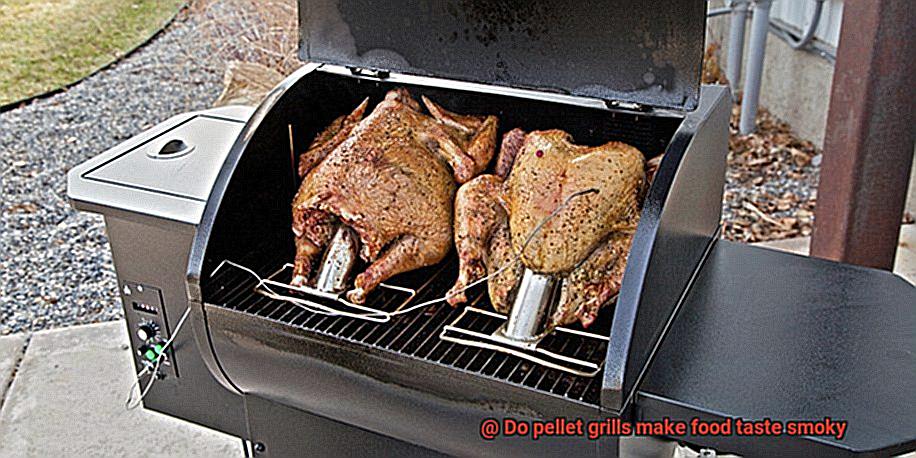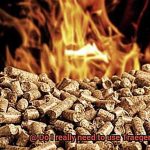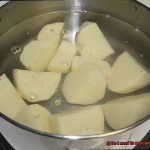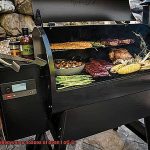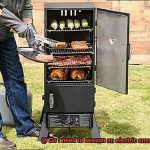Are you a foodie who craves the rich, smoky flavor in your meals but hates the hassle of traditional grilling methods? Enter pellet grills – the ultimate game-changer in outdoor cooking. These versatile appliances have taken the culinary world by storm, offering convenience and ease of use. But the big question is: do pellet grills make food taste smoky?
Pellet grills work by burning specially designed wood pellets made from compressed sawdust to create heat and smoke that infuses into your food. However, not all pellet grills are created equal. Some models produce more smoke than others, while some come with features that enhance that delicious smoky flavor.
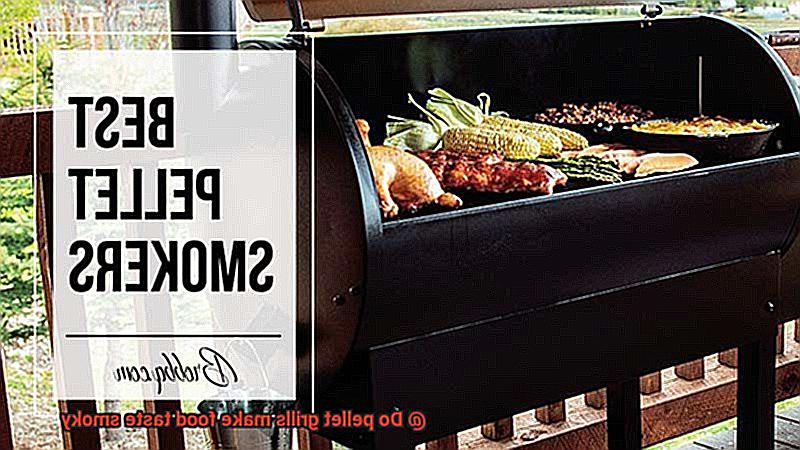
In this blog post, we’ll dive deep into the science behind smoke flavor and explore various factors that can impact it. We’ll also share some tips on how to maximize your grill’s potential for producing an irresistible smoky taste. Whether you’re a seasoned pro or a newbie cook, keep reading to discover how you can elevate your meals with a pellet grill’s distinct smokiness.
Contents
Benefits of Using a Pellet Grill
Look no further than a pellet grill. Pellet grills have quickly gained popularity among grill enthusiasts for their convenience, versatility, and unique smoky flavor. Let’s dive into the many benefits of using a pellet grill for your outdoor cooking needs.
One of the main advantages of using a pellet grill is its ability to produce consistent, even heat. This results in perfectly cooked meat every time, without the need for constant monitoring. The temperature can easily be regulated through the use of an electronic controller, allowing for precision cooking.
Pellet grills are also incredibly versatile, offering a wide range of cooking methods such as grilling, smoking, roasting, and baking. With a variety of wood pellets available in flavors like hickory, mesquite, and applewood, you can add a unique smoky flavor to any dish, from juicy steaks to slow-cooked brisket.
Compared to traditional charcoal grills, pellet grills are more environmentally friendly as they produce less ash and emit fewer pollutants into the air. Cleaning and maintenance are also a breeze with an external tray that collects the ash instead of it accumulating at the bottom of the grill.
Lastly, precise temperature control is key when it comes to achieving the perfect cook. Pellet grills offer this through their electronic controller system, eliminating any guesswork and ensuring consistent results every time.
Types of Wood Pellets to Use in Pellet Grills
Pellet grills are an excellent way to add smoky flavor to your food. But did you know that the type of wood pellets you use can affect the taste of your grilled dishes? Let’s explore the different types of wood pellets available and how they can impact the flavor of your food.
Hickory
If you’re looking for a bold and robust smoky flavor, then hickory wood pellets are the perfect choice for you. They are ideal for smoking meats like beef, pork, and poultry. Hickory provides a strong, savory taste that is perfect for meat lovers.
Mesquite
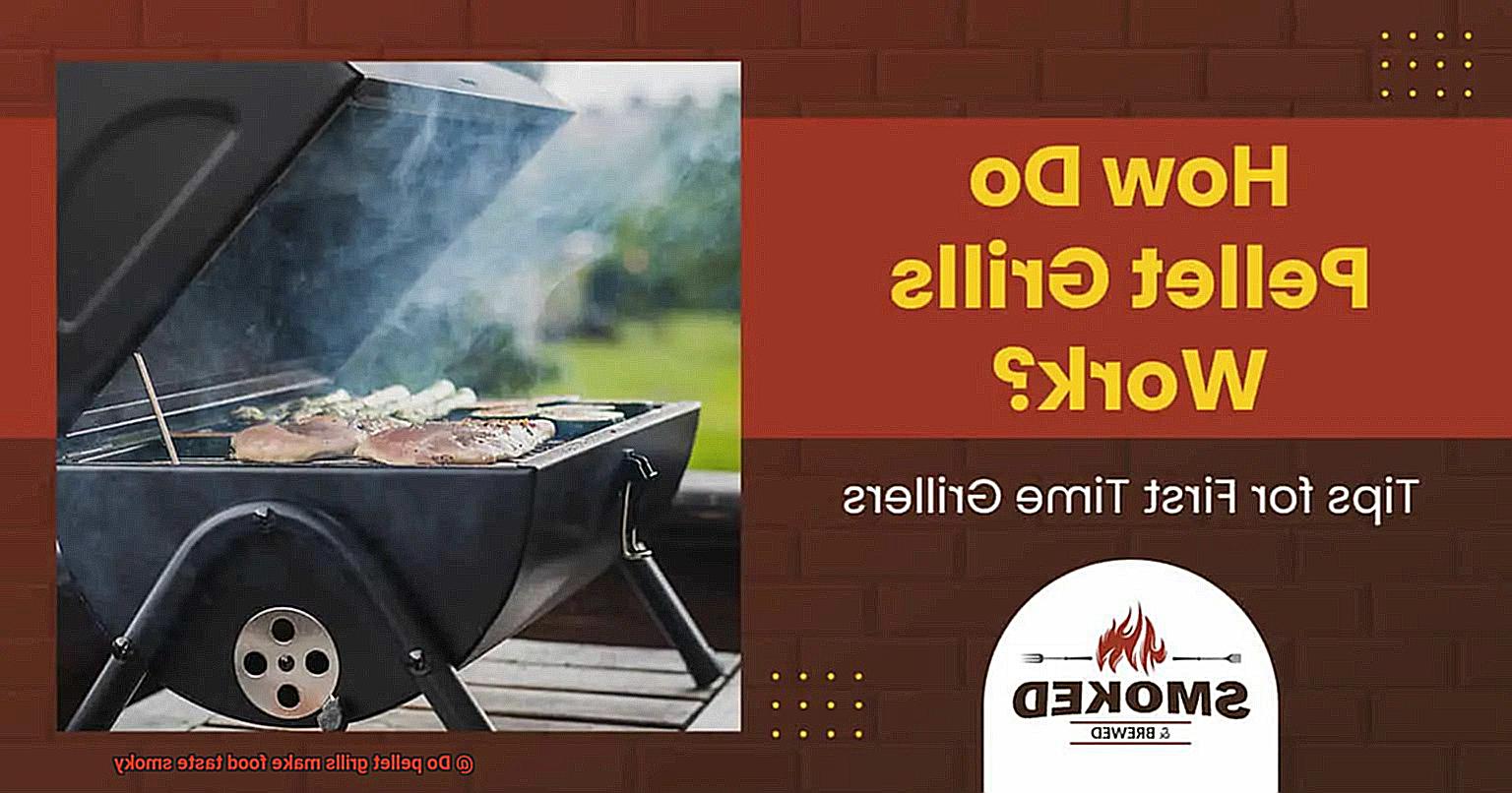
Another strong option is mesquite wood pellets. They have a distinct and bold flavor that pairs well with red meats like beef and pork. Mesquite is perfect for those who prefer a strong, earthy taste in their grilled dishes.
Applewood
If you prefer a milder smoky flavor, then applewood pellets are a good option. They have a sweet and fruity taste that complements pork and poultry dishes. Applewood provides a delicate, mildly sweet flavor that brings out the natural flavors of your food.
Cherrywood
Another mild option is cherrywood pellets. They have a slightly sweet taste that works well with all types of meat. Cherrywood provides a subtle, fruity flavor that adds depth to your grilled dishes without overwhelming them.
Oak
Oak wood pellets are a versatile choice that provides a medium smoky flavor that works well with any type of meat. Oak is also an excellent choice for those who want to add additional flavors to their food through the use of rubs or marinades. Oak provides a neutral base that allows other flavors to shine through.
Experimentation
When it comes to choosing the right wood pellets for your grill, experimentation is key. Try different flavors to find your perfect match and take your grilling game to the next level. You never know what delicious flavor combinations you might discover.
Temperature Control for Smoky Flavor in Pellet Grills
Let’s talk about how temperature control can help boost the smoky flavor of your dishes. Pellet grills use an electronic controller to regulate temperature and control smoke output. By understanding this process, you can create dishes that are bursting with a rich and deep smoky flavor.
To achieve optimal smokiness, set your grill at a lower temperature and let it smoke for a longer period of time. This allows the smoke to infuse the meat more deeply, creating a more complex and satisfying flavor. Be sure to experiment with different types of wood pellets to discover which ones produce the ideal level of smokiness for your tastes. For example, hickory pellets burn hotter and produce a stronger smoky flavor than oak pellets.
Monitoring smoke output is also crucial to achieving that perfect balance of smokiness. Too little smoke and your dishes will lack depth, while too much smoke can overwhelm your taste buds. A smoker tube or box can be used to control the amount of smoke inside the grill, ensuring that you get just the right amount.
Slow-Cooking Techniques for Maximum Smoky Flavor
If you’re looking to add a smoky depth of flavor to your food, slow-cooking techniques are the way to go when using pellet grills. The low and slow cooking method allows the food to absorb the smoke flavor from the pellets, giving it a more pronounced smoky taste. It’s particularly effective when cooking tough cuts of meat, such as brisket or pork shoulder, which need to be cooked for a long time to become tender.
Let’s explore the world of slow-cooking techniques and discover how smoking, braising, and slow-roasting can take your pellet grill game to the next level.
Smoking is a classic technique that has been used for centuries to impart smoky flavor into food. To smoke food on a pellet grill, set the temperature between 200-250 degrees Fahrenheit, add wood pellets to the hopper and let them burn. As they burn, they create smoke that infuses your food with a rich, deep flavor. The longer you cook your food, the more smoky flavor it will absorb.
Braising is another slow-cooking technique that involves cooking food in liquid at a low temperature for an extended period. This method is perfect for tougher cuts of meat that need time to become tender. To add smoky flavor to your braising liquid, simply add wood pellets and let them work their magic. The result is a tender and juicy dish with a deep and flavorful smokiness.
Slow-roasting is an excellent technique that works wonders on a pellet grill. By cooking your food at a low temperature for an extended period, you allow it to cook gradually while absorbing all the delicious smoky flavor from the wood pellets. To maximize the smokiness, add wood pellets directly to the fire pot or smoker box. The result? A perfectly cooked and smoky dish that will leave you craving more.
Pros and Cons of Using a Pellet Grill
If your answer is yes, then you might want to invest in a pellet grill. These grills have gained immense popularity in recent years, and for good reason. They offer a unique combination of convenience and flavor that traditional grills simply cannot match. However, before you make your purchase, it’s essential to understand the pros and cons of using a pellet grill.
Let’s start with the positives.
PROS:
- Rich Smoky Flavor: One of the most significant advantages of using a pellet grill is the rich, smoky flavor it imparts to your food. The wood pellets used as fuel create an unmistakable taste that is sure to impress your taste buds.
- Precise Temperature Control: Pellet grills allow for precise temperature control, making it easier to achieve the perfect level of smokiness in your food. Whether you’re smoking, grilling, or baking, you can trust that your pellet grill will maintain a consistent temperature throughout the cooking process.
- Versatility: Pellet grills are incredibly versatile and can handle a wide range of cooking methods. From smoking brisket to baking pizza, pellet grills are an excellent choice for those who want a grill that can do it all.
Now let’s look at the drawbacks.
CONS:
- Cost of Pellets: While wood pellets are generally more affordable than propane or charcoal, they can still add up over time. If you plan on using your pellet grill frequently, you may find yourself spending more than you anticipated on pellets.
- Mild Smoky Flavor: Some people may find that the smoky flavor produced by pellet grills is not as strong as they would like. While this may be a matter of personal preference, it’s worth noting that pellet grills may not provide the same intense smoky flavor as traditional smokers.
- Need for Electricity: Pellet grills require electricity to operate, which may limit their use in certain situations. If you plan on using your pellet grill for camping trips or other outdoor activities where electricity is not readily available, you may need to consider alternative cooking methods.
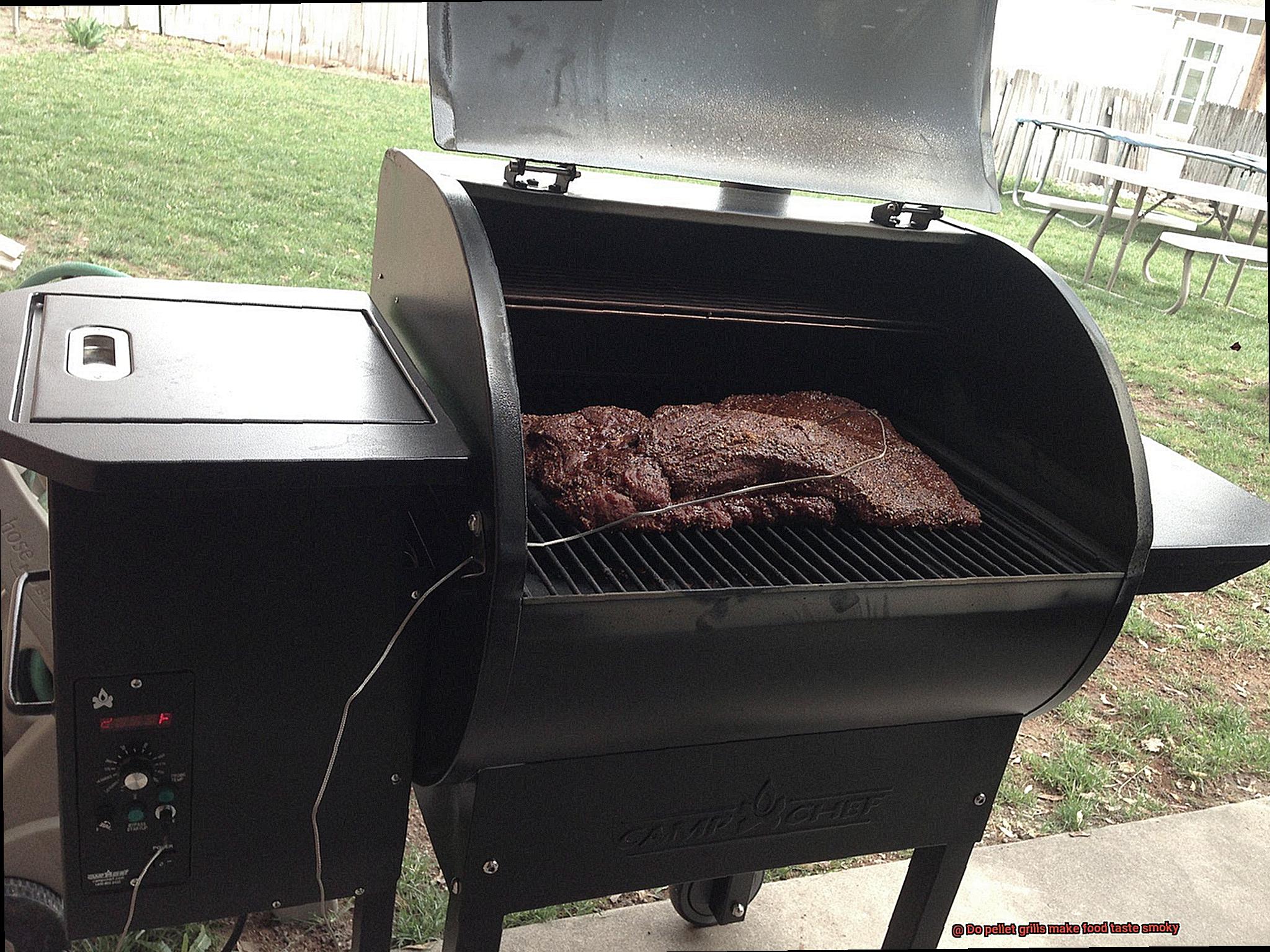
Tips for Getting the Most Out of Your Pellet Grill
If you’re looking to get the most out of your pellet grill, there are a few tips and tricks that can help you achieve perfectly smoky and flavorful dishes. Here are five sub-sections with expanded explanations to help you take your pellet grill to the next level.
Choose High-Quality Wood Pellets:
Choosing high-quality pellets made from hardwood such as mesquite or hickory will give you a stronger smoky flavor compared to pellets made from fruitwood or oak. It’s also important to note that not all pellets are created equal, and different types of wood can produce varying levels of smoke flavor. Experimenting with different types of pellets is key to finding the ones that work best for you.
Clean Your Grill Regularly:
Keeping your pellet grill clean is essential to maintaining the quality of your food’s taste. Regular cleaning can prevent any buildup of ash or debris that can affect the flavor. Ensure that the grill is free from any grease or leftover food particles before cooking.
Use a Meat Thermometer:
Using a meat thermometer is crucial in ensuring that your food is cooked to perfection. Overcooking or undercooking can ruin the taste and texture of your food, so using a thermometer will help you achieve the perfect doneness every time.
Consider Adding Wood Chips or Chunks:
To enhance the smoky flavor even further, consider adding wood chips or chunks in addition to the pellets. This will create more smoke and depth of flavor in your dishes. Soaking the chips in water or beer before use can also help prolong their burning time and intensify their flavor.
Experiment with Different Rubs and Sauces:
Don’t be afraid to experiment with different types of rubs, marinades, and sauces to add an extra layer of flavor to your food and complement the smoky taste from the grill. You can also try applying the rubs or sauces at different stages of the cooking process to create different flavor profiles.
Bonus tip: Cook Low and Slow:
Cooking your food at a low temperature for a longer period of time allows the smoke to fully penetrate the meat, developing its full flavor. This method is perfect for foods like brisket, ribs, and pulled pork. Patience is key when it comes to smoking meat, so don’t rush the cooking process.
Common Mistakes to Avoid When Cooking with a Pellet Grill
If your pellet grill isn’t delivering the taste you crave, you may be making some common mistakes that are affecting the quality of your food. As an expert on all things pellet grilling, I’m here to help you avoid these mistakes and unlock the full potential of your grill.
First and foremost, let’s talk about pellets. Cheap pellets made from low-quality wood can produce less smoke and leave a bitter taste in your food. To get that authentic smoky flavor, invest in high-quality pellets made from hardwoods like hickory, mesquite, or oak. Trust me; it’s worth the investment.
Another mistake to avoid is not preheating your grill. Preheating is crucial for allowing the pellets enough time to produce smoke and infuse your food with a delicious smoky flavor. So before you start cooking, make sure to give your grill ample time to heat up. Patience is key.
Once you’ve preheated your grill, try to resist the temptation to open the lid too often. Every time you do so, you release heat and smoke, which can affect the flavor of your food. Instead, trust in the process and only open the lid when necessary. Keep in mind that every dish needs its own time and space to cook perfectly.
Finally, overcooking or undercooking your food can also affect its smoky flavor. Follow recommended cooking times and temperatures for each type of meat to ensure that it’s cooked just right. Remember that cooking is an art, and timing is everything.
Cleaning and Maintenance Tips for Your Pellet Grill
To ensure that your grill is performing at its best and producing the best possible flavors for your food, it’s essential to keep it clean and well-maintained. Regular cleaning and maintenance not only help you achieve optimal performance but also extend the lifespan of your pellet grill. Here are some important tips for cleaning and maintaining your pellet grill.
Clean the Grates:
The grates are the most important part of your grill since they come into direct contact with your food. Therefore, make sure to clean them regularly with a grill brush or scraper to remove any debris or residue that may have accumulated. This helps prevent unwanted flavors from sticking to your food and ensures even heat distribution across the cooking surface. Additionally, you can use a non-toxic cleaner to remove tough stains and grease.
Empty the Ash Bin:
Pellet grills produce ash, which can build up over time and affect the performance of your grill. Emptying the ash bin regularly will prevent this from happening. It’s also important to avoid using water to clean out ash as it can create a sticky mess.
Clean the Interior:
The interior of your pellet grill can accumulate soot or grease buildup over time. Use a damp cloth to wipe down the interior, including the walls, ceiling, and bottom, after each use to remove any excess accumulation. Furthermore, avoid using abrasive cleaners that may damage the interior.
Check the Hopper:
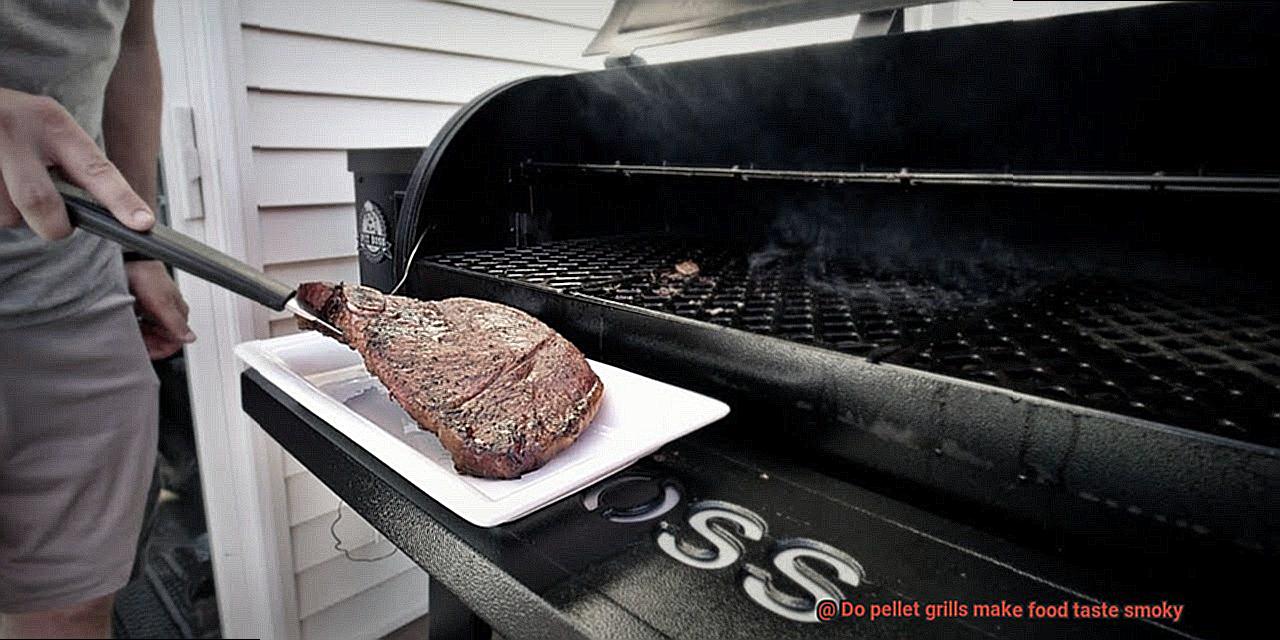
The hopper stores the pellets that fuel your grill. Make sure it is free of debris and that the pellets are dry and fresh as old or wet pellets can affect the flavor of your food and cause inconsistent heating. Additionally, if you need to replace pellets, dispose of them properly.
Check the Auger:
The auger is responsible for feeding pellets into your grill. Make sure it is clean and functioning correctly by checking for any jammed pellets or debris. A damaged or clogged auger may prevent the pellets from reaching the firepot, affecting the temperature of your grill.
Check the Temperature Probes:
Temperature probes are essential for ensuring your food is cooked to perfection. Make sure they are clean and calibrated correctly to avoid overcooking or undercooking your food.
By following these cleaning and maintenance tips, you can ensure that your pellet grill produces delicious, smoky-flavored food every time you use it. Proper cleaning and maintenance also help prevent potential hazards such as fires or gas leaks.
xr58Mws3DgE” >
Conclusion
In conclusion, pellet grills are a true game-changer in the world of outdoor cooking. Not only do they offer convenience and versatility, but they also provide a unique smoky flavor to your meals that is hard to replicate with other cooking methods. The type of wood pellets used can have a significant impact on the taste of your food, with hickory and mesquite providing bold flavors while applewood and cherrywood offer milder tastes.
To achieve optimal smokiness, temperature control is crucial. Slow-cooking techniques like smoking, braising, and slow-roasting allow for the smoke to penetrate the meat fully, resulting in flavorful and tender dishes that will leave your taste buds begging for more.
Pellet grills come with many advantages over traditional grilling methods. They offer consistent even heat, precise temperature control, versatility in cooking methods, and are environmentally friendly. However, they also have some drawbacks such as the cost of pellets and the need for electricity.
To get the most out of your pellet grill, it’s essential to choose high-quality wood pellets made from hardwoods like hickory or mesquite. Regular cleaning of your grill is also crucial to prevent buildup that can affect flavor and performance. Using a meat thermometer ensures perfect doneness every time while experimenting with different rubs and sauces adds an extra layer of flavor.
Finally, proper cleaning and maintenance are essential for ensuring that your pellet grill produces delicious smoky-flavored food every time you use it. Avoid common mistakes like using low-quality pellets or not preheating your grill properly to unlock the full potential of your pellet grill and elevate your outdoor cooking game.

